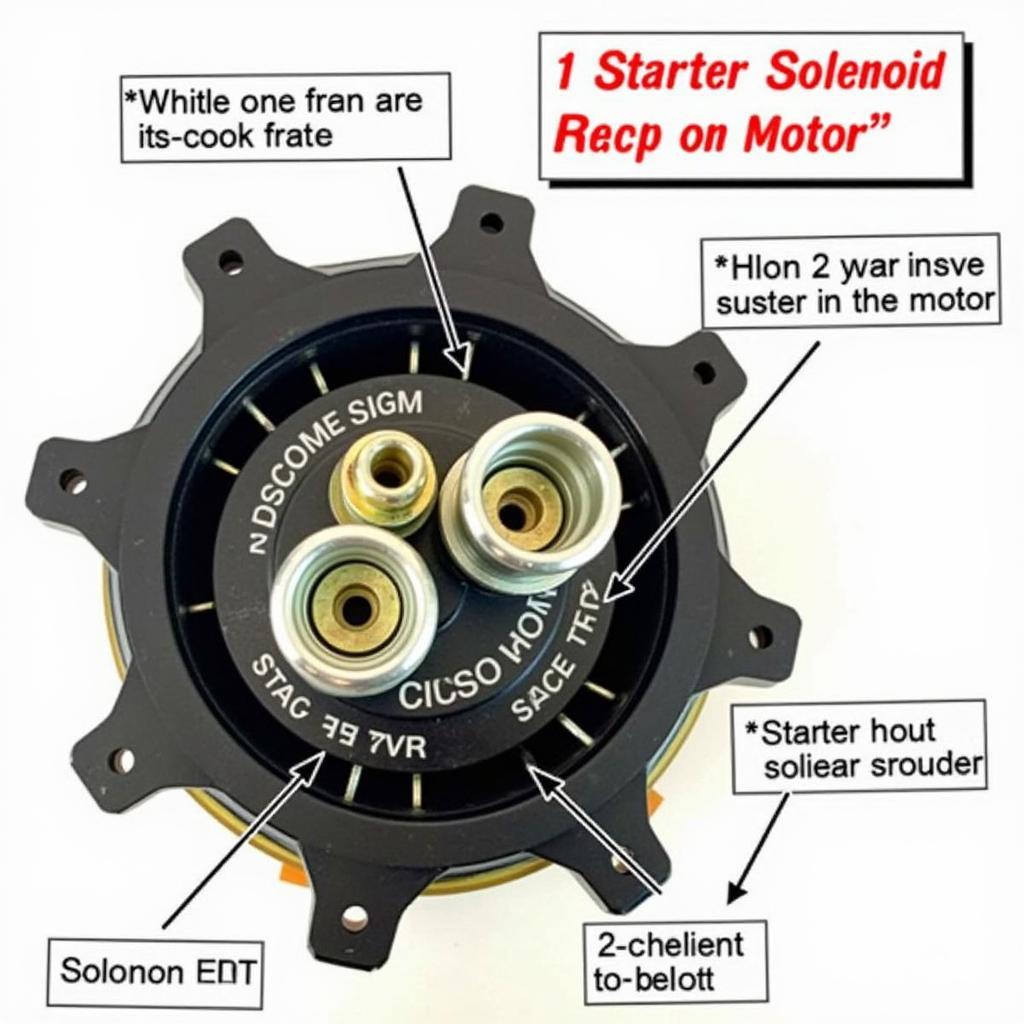A dead battery is frustrating, especially when the culprit is a sneaky starter draining battery power. This issue can leave you stranded and searching for answers. This comprehensive guide delves into the common causes of a starter draining your car battery, provides effective troubleshooting steps, and offers solutions to get you back on the road.
Understanding Why Your Starter is Draining Your Battery
A starter motor’s job is to crank your engine, drawing a significant amount of power for a short burst. Once the engine starts, the alternator takes over, recharging the battery. However, several malfunctions can cause the starter to continue drawing power even after the engine is running, leading to a drained battery.
Common Causes of a Starter Draining Battery
- Sticking Solenoid: The solenoid is an electromagnetic switch that engages the starter motor. If it sticks in the “on” position, the starter will continue to draw power, draining the battery.
- Faulty Ignition Switch: A malfunctioning ignition switch can prevent the starter from disengaging after the engine starts, leading to continuous power drain.
- Wiring Problems: Damaged or corroded wiring connected to the starter can cause a short circuit, leading to constant power drain.
- Bad Starter Motor: Internal issues within the starter motor itself can cause it to draw excessive current even when not engaged.
 Sticking Starter Solenoid
Sticking Starter Solenoid
Troubleshooting a Starter Draining Battery
Diagnosing the cause of a starter draining your battery requires a systematic approach. Here’s a step-by-step guide:
- Check the Battery: First, ensure your battery is in good condition. A weak or failing battery might appear to be drained by the starter, when in reality, it’s simply unable to hold a charge.
- Listen for Unusual Sounds: After starting your car, listen carefully for any unusual noises coming from the starter motor. A grinding or whirring sound after the engine starts could indicate a sticking solenoid or a faulty starter.
- Test the Voltage Drop: Using a multimeter, check the voltage drop across the starter circuit while the engine is running. A high voltage drop indicates excessive resistance, possibly due to wiring problems.
- Inspect the Wiring: Visually examine the wiring connected to the starter for any signs of damage, corrosion, or loose connections.
Solutions for a Starter Draining Battery
Once you’ve identified the cause, you can implement the appropriate solution:
- Replace the Solenoid: If the solenoid is sticking, replacing it is a relatively straightforward and inexpensive fix.
- Replace the Ignition Switch: A faulty ignition switch requires replacement, which can be more complex depending on the vehicle.
- Repair or Replace Wiring: Damaged or corroded wiring needs to be repaired or replaced to ensure proper electrical flow.
- Replace the Starter Motor: If the starter motor is faulty, replacement is often the best solution.
“A failing starter can be a significant inconvenience. Addressing the issue promptly can prevent further damage to your vehicle’s electrical system and save you from costly repairs down the line,” says automotive electrical expert, David Miller, ASE Certified Master Technician.
Remote Diagnostic and Programming Solutions
In today’s connected world, remote diagnostics and software solutions can offer efficient ways to address starter-related battery drain issues. Trained technicians can remotely access your vehicle’s systems, diagnose the problem, and even reprogram certain components, offering a convenient and often quicker solution.
“Remote diagnostics can save valuable time and money, particularly for software-related issues. In some cases, a simple software update can resolve the problem without requiring physical access to the vehicle,” adds Mr. Miller.
Conclusion
A starter draining your battery can be a frustrating problem, but by understanding the potential causes and following the troubleshooting steps outlined in this guide, you can quickly identify and resolve the issue. Whether it’s a sticking solenoid, faulty ignition switch, or wiring problem, addressing it promptly will save you time, money, and prevent further damage to your vehicle. Don’t let a draining starter leave you stranded – take charge and get your car back on the road!
FAQ
- How can I tell if my starter is draining my battery? Signs include a slow cranking engine, clicking sounds when starting, and a dead battery after short periods of inactivity.
- Can a bad alternator cause a starter to drain the battery? No, a bad alternator prevents the battery from recharging but doesn’t cause the starter to drain it.
- Is it safe to drive with a starter that is draining the battery? It’s not recommended, as it can lead to a complete battery failure and leave you stranded.
- How much does it cost to fix a starter draining a battery? The cost depends on the specific issue and can range from a relatively inexpensive solenoid replacement to a more costly starter motor replacement.
- Can I replace a starter myself? While possible, replacing a starter can be a challenging task for those without mechanical experience.
- How long does a starter motor typically last? Starter motors typically last between 100,000 and 150,000 miles.
- Can extreme temperatures affect the starter’s performance? Yes, extreme cold can make it harder for the starter to crank the engine, while extreme heat can damage the starter’s internal components.

